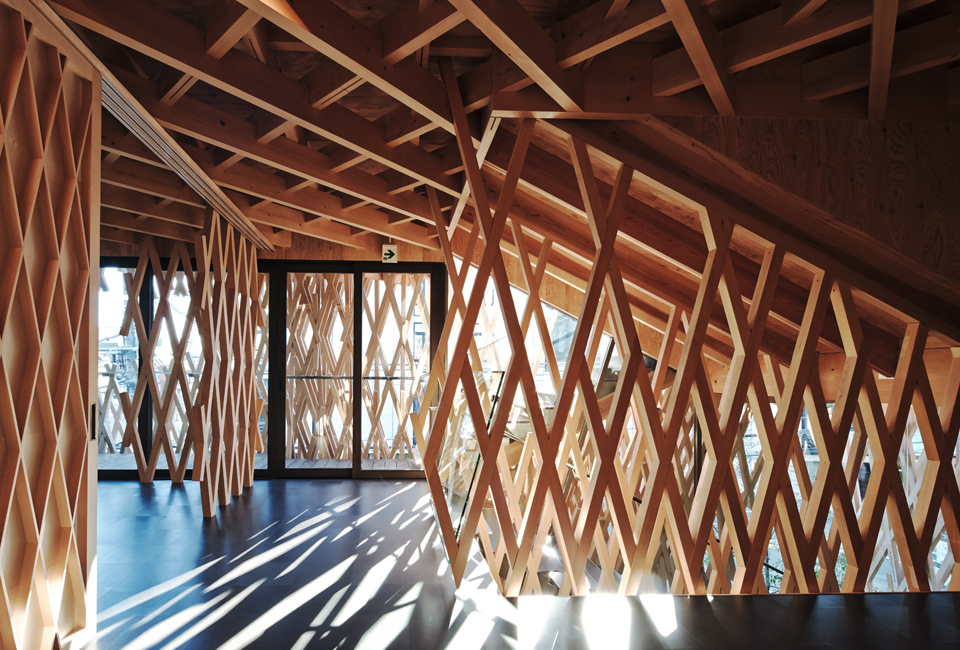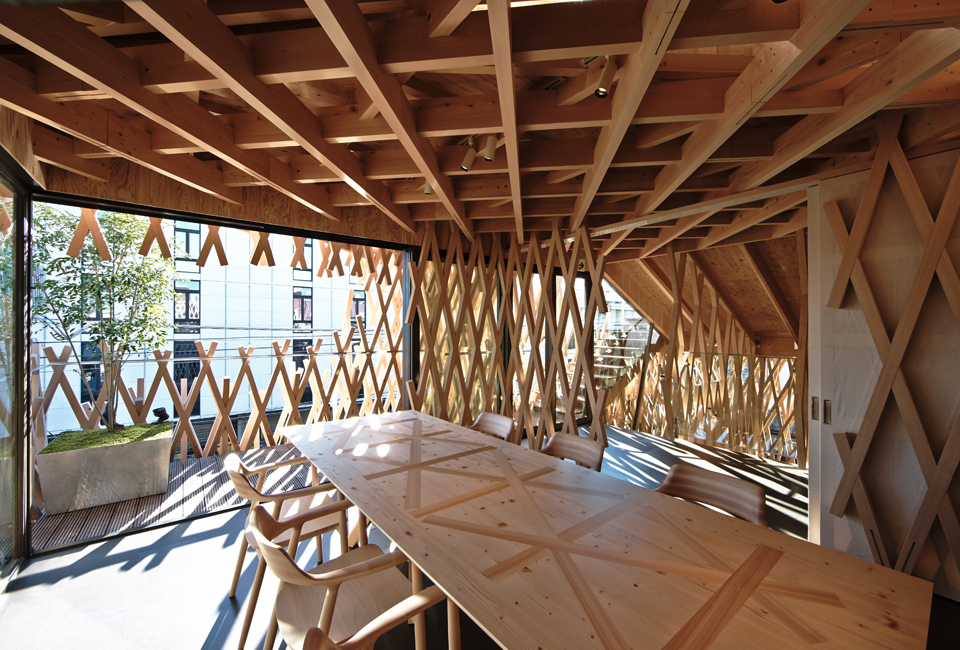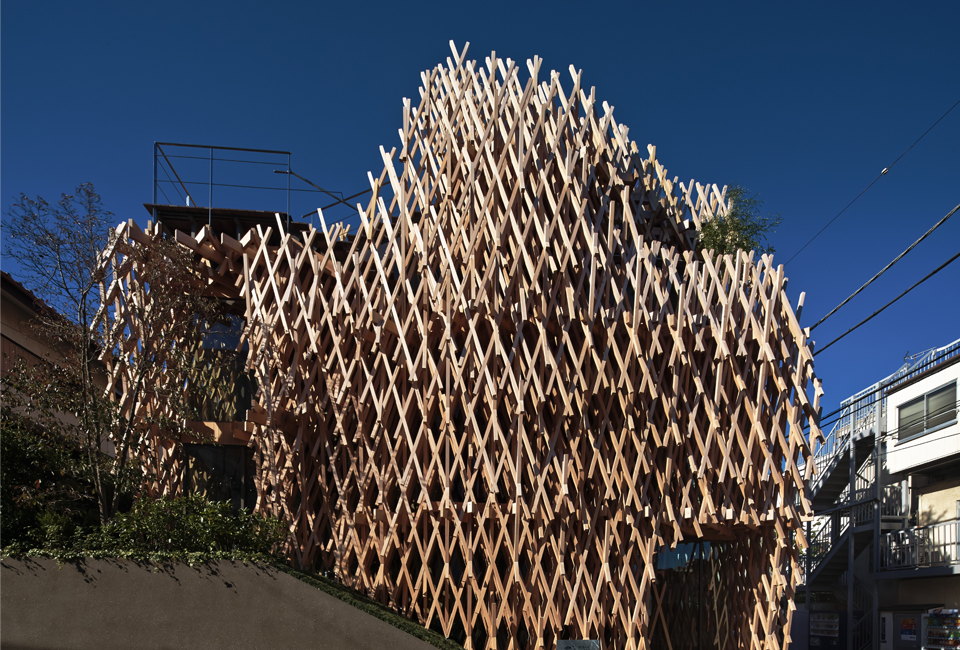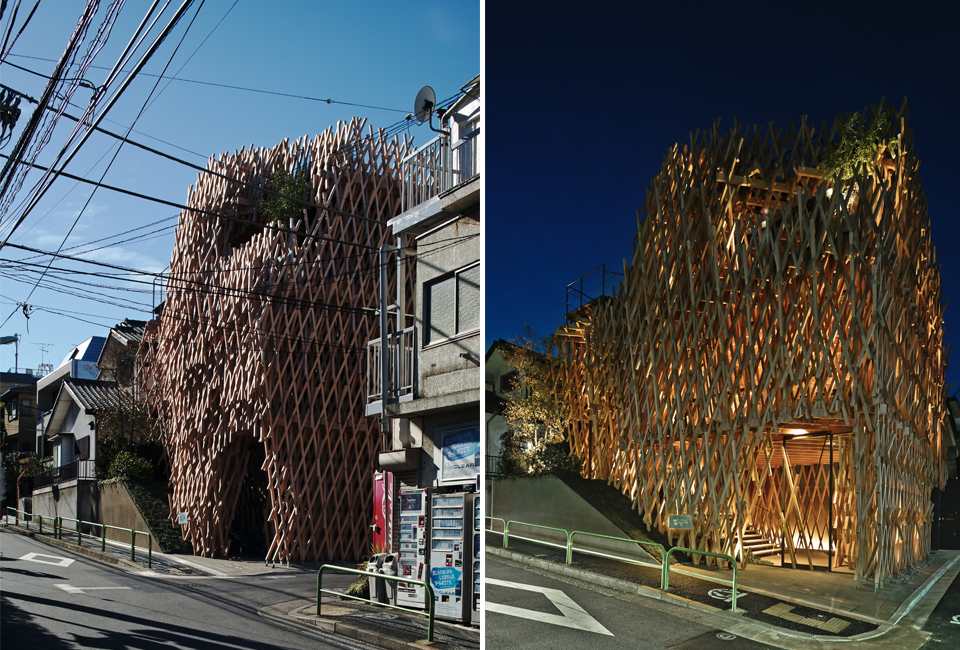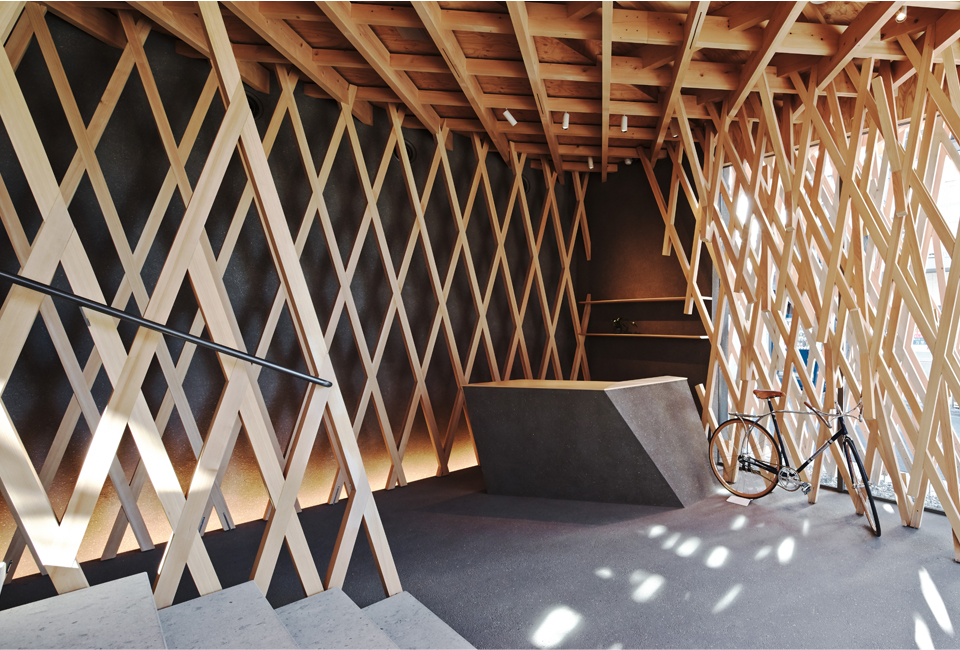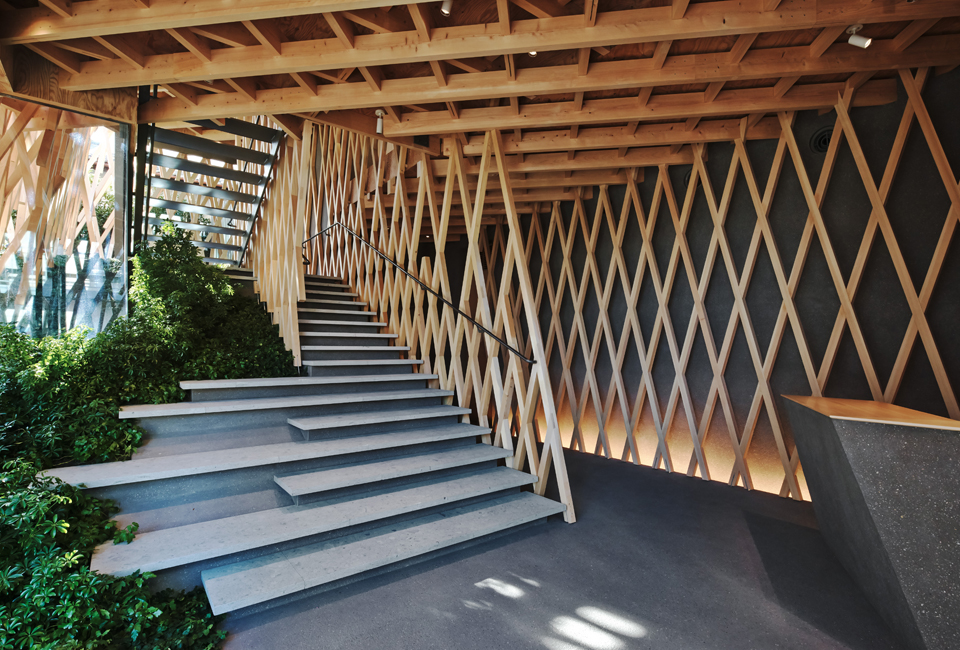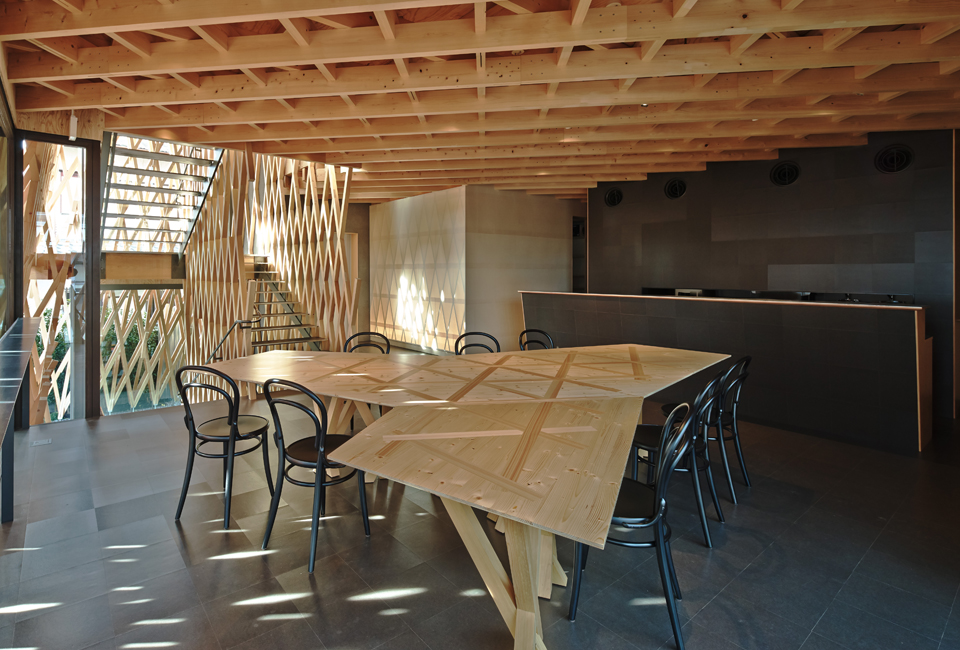A design project for the much awarded Tokyo based practice of Kengo Kuma and Associates was to create a retail outlet for the sale of a popular sweet in Taiwan, the pineapple cake. On a socially sensitive level, the history of this particular cake concerns the farming of a superior type of pineapple which is grown in one of the poorest regions of Taiwan, its production provides work for many people who would otherwise be living in absolute poverty.
With this in mind, the architect set out to design a structure which would both represent the ethos of the product and coexist with the pre-existing structures in the upmarket residential neighborhood of Minami Aoyama in Tokyo. His inspirational basket like 3D grid of criss crossed wooden joints with which the three level building is encased, refers to the traditional ‘Jigoku-Gumi’ method of Japanese construction. The levels of the bright free flowing interior are connected through a series of stairs and adheres to a natural material palette of stone, cork, Japanese cypress with walls of the upper levels lined with washi paper and plywood.
Resembling a structurally sound version of the sculptures of Japanese artist, Tadashi Kawamata, the overlapping layers of wood produce an effect which Kengo Kuma likes to refer to as ‘a forest in the busy city centre’ and is a step in the direction to bring to reality his dream to bring back Japanese culture to architectural design by reintroducing wood as a viable building material for an urban environment.
